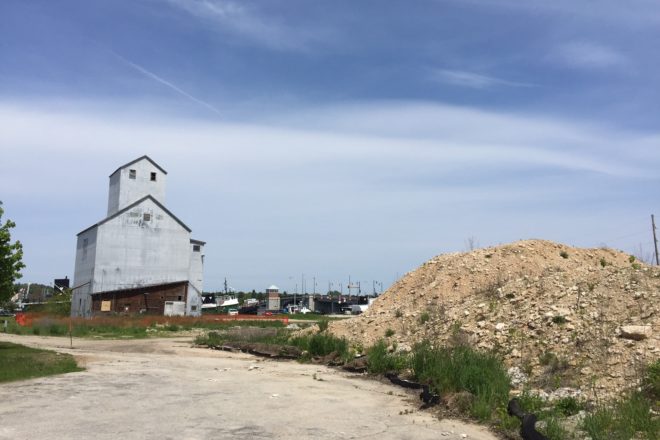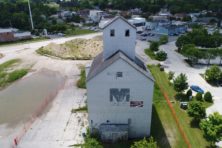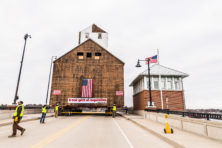Engineer Says 2013 Report on Granary Misinterpreted
- Share
- Tweet
- Pin
- Share

Mike Till, the structural engineer whose 2013 report has often been cited by those who want to raze the historic Granary building on Sturgeon Bay’s west waterfront, said his report has been misinterpreted.
“I have an obligation as a structural engineer to warn public officials of unsafe conditions,” Till said. “And when I inspected the property in 2013 there were unsafe conditions. What I told them was that if you don’t have money to stabilize it, because it would be very expensive to do so, I’m afraid you’ll end up razing it.”
But Till said with $1.36 million pledged to save the structure, he was inspired to think of the possibilities for the building he called “a treasure” and one of the most recognizable symbols of the city. The city has not had any discussions about what could be done with the money pledged.
Till is a professional engineer registered in Wisconsin who has provided services in Door County since 1969. In an email sent to Sturgeon Bay Community Development Director Marty Olejniczak Dec. 22, Till expressed his dismay at the city’s apparent rush to tear down the structure, and urged officials to swallow their pride and consider alternative solutions to the months-long controversy.
“Allow me here to plead the city fire chief and council to reconsider the take down orders regarding the granary,” Till wrote.
Till said he was inspired to write the letter after taking a tour of the Titletown District near Lambeau Field in Green Bay.
“As I go by the Granary building, I thought there’s a way to save that building and make that area into a recreational playground like they’ve done in Green Bay,” he said.
The Granary fits into the growing trend of mass timber design, Till said, and could be incorporated as a warming house for an ice rink, and used for farm markets in summer months.
Till also expressed doubts that the low bid submitted to the city for deconstructing the building would meet the desire for preservation called for in the motion passed by the Sturgeon Bay Common Council in November.
“There’s no way you can preserve that building in any meaningful way for $60,000,” Till said.
His letter should not be interpreted as a solicitation for work, Till said, but as the words of a concerned citizen of Sturgeon Bay who happens to be a structural engineer.
“There has been so much hatred, so much vitriol in this, that they need a third party to come in and mediate this,” he said. “Let’s think about this again before we act too rashly and tear it down.”


